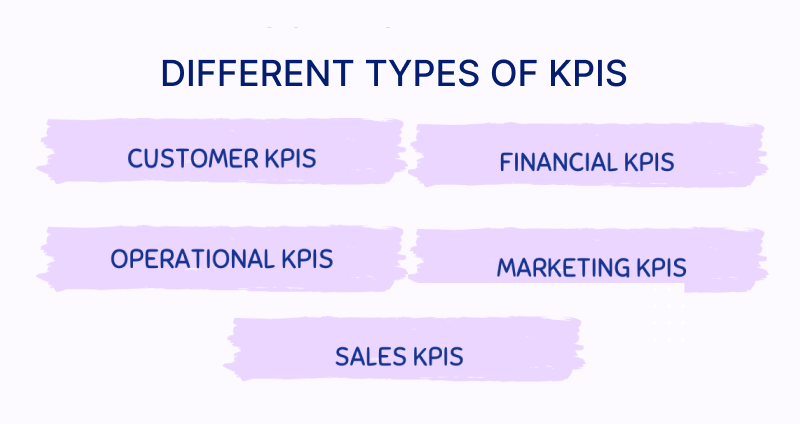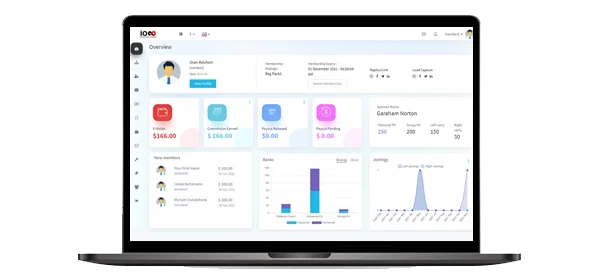Welcome readers to the ever evolving world of direct selling. Here, success is determined by more than one factor, and one factor that reigns supreme is: KPIs, or Key Performance Indicators.
Picture this: you’re navigating a forest, your trusty compass in hand. You need it to guide you through the dense thicket, to help you find your way to the hidden treasure. Well, in the direct selling, KPIs are your compass, your guiding light, and your treasure map all rolled into one.
Welcome to our blog, I’ll be your seasoned guide, revealing the 10 Essential Metrics to Monitor in 2024 that will not only steer your business in the right direction but also keep you ahead of the competition.
So, if you’re ready, I’m also ready! 😄
What are Direct Selling KPIs?

In general, KPIs, or Key Performance Indicators, are measurable metrics or data points that organizations use to evaluate and track the success of specific objectives, projects, or processes.
Direct selling KPIs are metrics that measure the performance of a direct selling business. They can be used to track the success of individual distributors, teams, or the company as a whole. They serve as benchmarks, helping you track progress towards your goals, whether it’s achieving a certain sales target, expanding your customer base, or improving team performance. These KPIs encompass a wide range of aspects, from sales and recruitment to customer experience and retention.
The Significance of Direct Selling KPIs

Measuring Success
One of the most significant benefits of KPIs in marketing is their ability to measure success objectively. Rather than relying on gut feelings or guesswork, direct sellers can rely on absolute data to assess their progress.

Identifying Areas for Improvement
KPIs highlight areas that need attention. If your sales numbers are stagnant, or if you notice a high churn rate among your recruits, KPIs can pinpoint these issues and help you formulate strategies to address them.

Goal Setting and Strategy Development
KPIs are essential for setting realistic and achievable goals in direct selling companies.They provide a clear picture of where you currently stand and where you want to be, allowing you to craft actionable strategies to bridge the gap.

Motivating and Rewarding Teams
Key Performance Indicators also play a crucial role in motivating your team. When your team members can see their individual and collective contributions reflected in KPIs, it boosts morale and encourages everyone to strive for excellence.

Adapting to Market Changes
In the ever-evolving world of direct selling, market conditions can change rapidly.Monitoring KPIs enables you to adapt quickly and make data-driven decisions to stay ahead of the curve.

Performance Evaluation
In MLM companies, performance evaluation involves assessing the effectiveness of distributors’ sales strategies and their contribution to the overall success of the organization.
10 Important KPIs in Direct Sales
1. Sales Revenue
Sales revenue is the total total amount of money earned by the company through its direct sales channels,which typically involve independent distributors or consultants who sell products directly to consumers.
Metrics Used for Sales Revenue in Direct Selling
Total Sales Revenue
This is the sum of all sales generated within a specific period. It encompasses all sales channels, including online, in-person, or any other method employed by the company.
Sales Revenue by Product Category
Breaking down revenue by product categories can help identify which product lines are the most profitable and which might need more attention.
Geographic Sales Revenue
Analyzing revenue by region or geographic area can reveal variations in sales performance and help direct sales teams to focus their efforts more effectively.
Customer Segmentation
Categorizing sales revenue by customer types (e.g., new customers, frequent customers, loyal customers) can provide insights into customer behaviour and loyalty trends.
Sales Revenue per Distributor
Measuring how much revenue each distributor generates on average can help identify high-performing distributors and areas where additional training or support may be required.
2. Customer Acquisition Cost (CAC)
Measuring and managing the Customer Acquisition Cost (CAC) directly impacts the profitability and sustainability of the business. CAC represents the total amount of money a company invests in marketing and sales activities to acquire a new customer. This metric helps businesses understand the efficiency of their customer acquisition strategies and assess the return on investment (ROI) for each new customer brought into the fold.
KPIs to Calculate Customer Acquisition Cost (CAC)
Marketing Expenses
To calculate CAC, start by summing up all the costs associated with your marketing efforts. This includes expenses for advertising campaigns, social media advertising, email marketing, content creation, and any other promotional activities.
Sales Expenses
Next, consider the costs related to your sales team, such as salaries, commissions, bonuses, and any tools or software used for sales automation or customer relationship management (CRM).
Time Period
Determine the specific time period over which you want to calculate CAC. It’s common to do this on a monthly or quarterly basis, depending on your business cycle and goals.
New Customers Acquired
Count the number of new customers acquired during the chosen time period. These should be unique individuals or organizations that have made their first purchase or transaction with your company.
CAC Formula: The formula for calculating CAC is as follows:

3. Customer Lifetime Value (CLV)
Customer Lifetime Value (CLV) in direct selling focuses on the long-term value each customer brings to the business. CLV represents the predicted revenue a company can expect to earn from a customer over the entire duration of their relationship with the company. It provides valuable insights into the profitability of acquiring and retaining customers and is essential for making informed business decisions.
KPIs to Track Customer Lifetime Value (CLV)
Average Purchase Value (APV)
Calculate the average value of each customer’s purchase or transaction. This can be done by dividing the total revenue generated by the number of transactions or purchases.

Average Purchase Frequency (APF)
Determine how often, on average, customers make a purchase. This is usually measured over a specific time period, such as a month or a year.

Average Customer Lifespan (ACL)
Calculate the average duration a customer remains active and engaged with the company. This can be determined by analyzing historical customer data.

Customer Retention Rate (CRR)
Measure the percentage of customers who continue to make purchases from your company over time. This helps assess how effective your retention strategies are

Discount Rate (r)
Determine the discount rate or rate of return you want to apply to future cash flows to calculate their present value. This rate is typically based on the company’s cost of capital or desired rate of return.

The formula for calculating CLV is as follows:

4. Sales Conversion Rate
Sales Conversion Rate measures the effectiveness of the sales process. It represents the percentage of potential leads or prospects who take a desired action, typically making a purchase or signing up as distributors or representatives. This KPI is crucial for evaluating the efficiency of the sales funnel and for optimizing strategies to increase conversion rates.
Direct Selling Business-Critical Sales KPIs to Track
Lead Generation
The number of leads generated is an essential KPI. It tracks how many individuals or organizations have shown interest in your products or business opportunities. This can include inquiries, sign-ups, or participation in events.
Sales Conversion Rate
This is the percentage of leads or prospects who actually make a purchase or become distributors. It’s calculated as follows:

Average Order Value (AOV)
AOV measures the average amount spent by customers in a single transaction. It can provide insights into purchasing behavior and opportunities to increase sales per customer.

Customer Retention Rate (CRR)
CRR tracks the percentage of customers or distributors who continue to engage with your company over time. It reflects the effectiveness of your retention strategies.

Churn Rate
Churn rate calculates the percentage of distributors or customers who discontinue their involvement with your company. High churn rates can signal problems in your business model or customer satisfaction.
5) Average Order Value (AOV)
Average Order Value (AOV) quantifies the average amount spent by customers in a single transaction. It’s a critical metric for assessing the effectiveness of sales and marketing strategies and maximizing revenue from each customer interaction.
Total Revenue
Calculate the total revenue generated from all sales within a specific time period.
Number of Orders
Count the total number of orders placed during the same time period.

6) Churn Rate
Churn Rate, also known as attrition rate, measures the rate at which customers or distributors discontinue their involvement with a company. It is a crucial metric for assessing customer or distributor retention and the overall health and sustainability of a direct selling business. A high churn rate can signal problems in the business model, customer satisfaction, or distributor engagement.
KPIs to Track Churn Rate in Direct Selling
Number of Customers/Distributors Lost
Count the total number of customers or distributors who have discontinued their involvement with the company during a specific time period.
Total Number of Customers/Distributors at the Start of the Period
This represents the total number of customers or distributors at the beginning of the time period under consideration.

7) Team Performance
Team Performance measures how well the team collectively achieves its goals, which can include sales targets, recruitment objectives, and overall business growth. Team Performance is essential in direct selling as success often relies on the collective efforts of a network of independent sellers.
KPIs to Track Team Performance in Direct Selling
Sales Volume
Measure the total sales generated by the entire team within a specific period. This indicates the team’s ability to drive revenue collectively.
Recruitment Rate
Calculate the rate at which team members recruit new distributors or representatives. This KPI is crucial for assessing the team’s growth potential.

Team Size
Determine the total number of active team members during the chosen time period. This provides context for understanding team performance relative to its size.
Average Sales per Team Member
Calculate the average sales achieved by each team member. This helps identify high-performing individuals and areas where additional support or training may be needed.

Retention Rate
Measure the percentage of team members who remain active over time. A high retention rate indicates a strong team culture and support system.

8) Inventory Turnover Rate
Inventory Turnover Rate measures how efficiently a company manages its inventory. It quantifies how many times a company’s inventory is sold and replaced within a specific time period.
KPIs to Track Inventory Turnover Rate
Cost of Goods Sold (COGS)
Calculate the total cost of goods sold during a specific time period. It includes the direct costs associated with producing or procuring the products you sell.

Average Inventory Value
Determine the average value of your inventory during the same time period. This provides the basis for calculating Inventory Turnover Rate.


9) Social Media Engagement
Social Media Engagement assesses the level of interaction, participation, and feedback your company receives on social media platforms. In today’s digital age, social media plays a significant role in building and nurturing relationships with customers, distributors, and prospects. Measuring social media engagement is essential for evaluating the effectiveness of your online presence and marketing efforts in direct selling.
KPIs to Track Social Media Engagement in Direct Selling
Likes, Shares, and Comments
Monitor the number of likes (reactions), shares (retweets or reposts), and comments (including replies) your social media posts receive. These are basic indicators of user engagement.
Follower Growth
Track the growth in the number of followers on your social media profiles. An increase in followers indicates that your content is resonating with your audience.
Click-Through Rate (CTR)
Measure the percentage of people who click on links within your social media posts. This is an important indicator of content relevance and user interest.

Engagement Rate
Calculate the engagement rate by adding the number of likes, shares, and comments and dividing it by the total number of followers.

Conversion Rate
If your social media posts are designed to drive specific actions, such as signing up as a distributor or making a purchase, track the conversion rate to measure the effectiveness of these calls to action (CTAs).

Response Time
Measure the average response time to user comments or inquiries on your social media posts. A prompt response is essential for building trust and fostering engagement.
10) Return on Investment (ROI)
Return on Investment (ROI) evaluates the profitability and efficiency of various investments and initiatives made by the company. In direct selling, ROI is essential for assessing the success of marketing campaigns, sales strategies, and other expenditures.
KPIs to Track ROI in Direct Selling
Total Revenue
Calculate the total revenue generated during a specific time period. This represents the top-line income your direct selling business has generated.
Marketing and Sales Expenses
Sum up all the costs including advertising, promotions, sales team salaries, commissions, and any other related costs during the same time period.
Customer Acquisition Cost (CAC)
Determine the cost of acquiring new customers or distributors
Customer Lifetime Value (CLV)
Calculate the average lifetime value of a customer or distributor.
The formula for calculating Return on Investment (ROI) is as follows:


Tools and Software for Tracking KPIs in Direct Selling
When it comes to tracking direct selling KPis, having the right tools and software at your disposal makes all the difference. These tools not only simplify the process but also provide valuable insights that empower you to create a success story through informed decisions. Let’s dive into some of these tools.

1.Tableau
- Tableau is a powerful data visualization tool that can connect to various data sources and create interactive dashboards.
- It turns your data into visually appealing insights, making it easier to spot trends and outliers in your direct selling KPIs.

2. Salesforce
- Salesforce is a leading CRM software with robust reporting and analytics capabilities.
- It allows you to track sales performance, customer interactions, and lead management, helping you optimize your direct selling strategy.

3. Hubspot
- HubSpot is an all-in-one marketing and CRM platform that includes features for tracking sales and customer engagement.
- It centralises customer data and helps you measure KPIs related to lead generation conversion rates, and customer satisfaction.

4. Klipfolio
- Klipfolio is a cloud-based dashboard and reporting tool that integrates with multiple data platforms.
- It’s ideal for tracking and displaying direct selling KPIs in real-time, providing actionable insights for informed decision-making.

5. Moz Pro
- Moz Pro is an SEO and online marketing software that helps you track KPIs related to search engine visibility and website rankings.
- It’s essential for direct selling businesses aiming to improve their online presence and organic traffic.
Endnote
As we draw the curtains on our journey through the realm of Direct Selling KPIs, it’s clear that these metrics aren’t just numbers on a spreadsheet; they’re the beating heart of your success story in 2024.
In a world where the competition is fierce and customer expectations are higher than ever, understanding and implementing these 10 Essential Metrics is the key to not just surviving but thriving in the direct selling universe.
Keep a watchful eye on those KPIs, adapt, evolve, and watch your direct selling enterprise soar to unprecedented heights.








